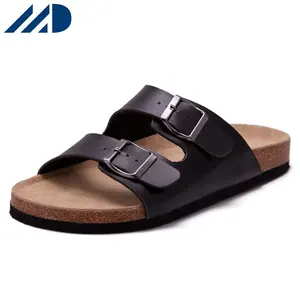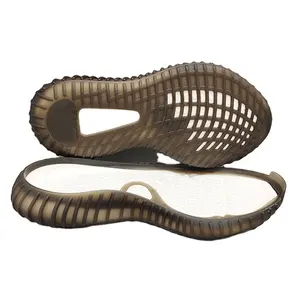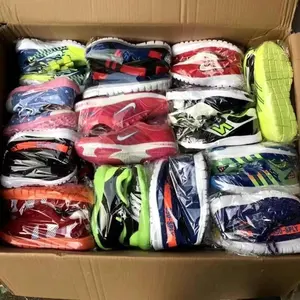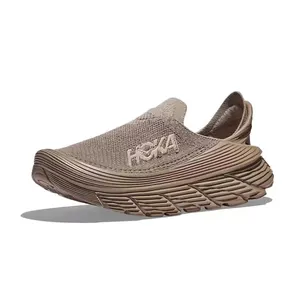Phổ biến trong ngành của bạn






Tốc độ cao Tự động PVC Panel Trần đùn dây chuyền sản xuất uPVC & PE nhựa đùn máy với lõi vít thành phần
8.200,00 US$ - 10.500,00 US$
Đơn hàng tối thiểu: 1 Bộ
Vận chuyển mỗi chiếc: 133,90 US$







Cao Áp Laminate Dây Chuyền Sản Xuất Pur Laminating Máy Pvc Panels Laminating Máy Cho Hội Đồng Quản Trị Bọt
54.500,00 US$ - 58.500,00 US$
Đơn hàng tối thiểu: 1 Bộ







SPC Vinyl Tấm Ván Máy Sản Xuất, PVC Gạch Lát Sàn Máy Làm, PVC Lồng Vào Nhau Máy Sàn
120.000,00 US$
Đơn hàng tối thiểu: 1 Bộ







Máy đùn Chất lượng cao cho bảng nhựa Polypropylene rỗng máy đùn cho PP tấm rỗng
100.000,00 US$
Đơn hàng tối thiểu: 1 Bộ







Wpc Tấm Bọt Máy Ép Nhựa Hội Đồng Quản Trị Máy Làm/Pvc Wpc Tấm Bọt Đùn Line
45.000,00 US$
Đơn hàng tối thiểu: 1 Bộ






WPC PVC Lớp Vỏ Hội Đồng Quản Trị Bọt Máy Làm/Phun Ra Dòng Pvc Phim Máy Cán
110.000,00 US$
Đơn hàng tối thiểu: 1 Bộ






Trực tuyến cán PVC WPC Hội Đồng Quản trị bọt đùn Máy làm
93.000,00 US$ - 95.000,00 US$
Đơn hàng tối thiểu: 1 Bộ






BOGDA Sản Phẩm Mới Máy Cán Tấm Xốp Pvc Hỗ Trợ Kỹ Thuật Video Điều Kiện 2022
85.000,00 US$
Đơn hàng tối thiểu: 1 Bộ






Carbon tinh thể tấm PVC bọt Hội Đồng Quản Trị sản xuất máy Pet phim cán máy
92.000,00 US$ - 95.000,00 US$
Đơn hàng tối thiểu: 1 Bộ






PVC Hội Đồng Quản trị bọt đùn phù hợp với trực tuyến Máy cán
78.000,00 US$ - 80.000,00 US$
Đơn hàng tối thiểu: 1 Bộ






Phim nhựa nhiều lớp PVC Hội Đồng Quản trị bọt trang trí nội thất tấm co-đùn sản xuất máy móc
58.000,00 US$ - 65.000,00 US$
Đơn hàng tối thiểu: 1 Bộ












Sjsz80/156 Pvc Hội Đồng Quản Trị Bọt Dây Chuyền Sản Xuất Với Cán Máy
70.000,00 US$
Đơn hàng tối thiểu: 1 Bộ






Sử dụng WPC nhựa PP gỗ composite bảng cửa dây chuyền sản xuất PVC Hội Đồng Quản trị bọt nhiều lớp máy làm
23.000,00 US$ - 23.500,00 US$
Đơn hàng tối thiểu: 1 Bộ






9mm WPC PVC Hội Đồng Quản trị bọt tre than Hội Đồng Quản Trị máy đùn Máy làm Laminate PVC bọt Hội Đồng Quản trị tấm máy đùn
68.000,00 US$ - 72.000,00 US$
Đơn hàng tối thiểu: 1 Bộ
Vận chuyển mỗi chiếc: 31.000,00 US$





Sản lượng cao và hoạt động ổn định PVC miễn phí bọt Hội Đồng Quản trị máy làm bọt Hội Đồng Quản trị tấm máy đùn
79.000,00 US$
Đơn hàng tối thiểu: 1 Bộ






Chất lượng cao trang trí nhựa PVC tấm đá cẩm thạch Panel tường nhân tạo Composite Board dây chuyền sản xuất máy làm
15.000,00 US$ - 16.000,00 US$
Đơn hàng tối thiểu: 1 Bộ
Vận chuyển mỗi chiếc: 0,00 US$






Tự động nhựa louver Bảng điều chỉnh máy đùn PS máy làm cho bảng điều khiển tường
28.500,00 US$ - 33.800,00 US$
Đơn hàng tối thiểu: 1 Bộ
Vận chuyển mỗi chiếc: 199,22 US$





Tấm Ván Sàn Nhựa PVC Cứng SPC Tấm Ván Sàn PVC Tấm Ván Xốp WPC Máy Sản Xuất
120.000,00 US$
Đơn hàng tối thiểu: 1 Bộ




Bảo Vệ Trang Trí Nội Thất UV Laminate Giả Đá Cẩm Thạch Board Máy Đùn
179.999,00 US$ - 180.000,00 US$
Đơn hàng tối thiểu: 1 Bộ






Chất lượng cao Máy cán cho bọt KT Hội Đồng Quản trị với vải
1.200,00 US$ - 1.600,00 US$
Đơn hàng tối thiểu: 1 Bộ






Ruk cao hiệu quả cắt EPS EVA miếng bọt biển cao su máy cắt bọt CNC Máy cắt
38.850,00 US$ - 44.100,00 US$
Đơn hàng tối thiểu: 1 Bộ






1300 hút chân không hấp phụ hình thành off line Máy/Cán phim thiết bị/Máy dập nóng cho PVC WPC bọt bảng điều khiển cửa
83.980,00 US$
Đơn hàng tối thiểu: 1 Bộ






PVC Laminate Đá Cẩm Thạch Tấm Making Machine Với UV Coating
12.300,00 US$ - 12.800,00 US$
Đơn hàng tối thiểu: 1 Bộ

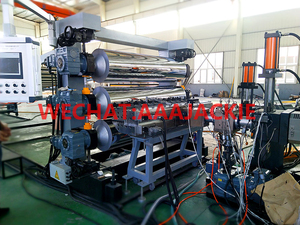




Máy Đùn Tấm Nhựa Acrylic PMMA Cho Sản Xuất Tấm Nhựa Màu Trong Suốt
115.000,00 US$ - 120.000,00 US$
Đơn hàng tối thiểu: 1 Bộ





Julide nhà máy Giá bán PVC bọt lớp vỏ/bọt tấm Hội Đồng Quản Trị sản xuất máy cho doanh nghiệp nhỏ
49.000,00 US$ - 50.000,00 US$
Đơn hàng tối thiểu: 1 Bộ






PVC quảng cáo Hội Đồng Quản trị bọt máy với cán cắt máy in cho quảng cáo bảng biểu ngữ
80.000,00 US$ - 90.000,00 US$
Đơn hàng tối thiểu: 1 Bộ
Vận chuyển mỗi chiếc: 61,30 US$






Chất lượng cao nhựa PVC Hội Đồng Quản trị bọt Máy làm hữu ích cho tủ phòng tắm và tủ bếp
120.000,00 US$
Đơn hàng tối thiểu: 2 Bộ






PE PVC WPC ngoài trời hàng rào decking khung cửa Clip hồ sơ nhà Bảng điều khiển máy đùn đùn Máy làm
40.000,00 US$ - 45.000,00 US$
Đơn hàng tối thiểu: 1 Bộ
Vận chuyển mỗi chiếc: 26,68 US$






Hiệu suất cao nhựa SPC Sàn PVC dây chuyền sản xuất SPC cán bảng đá cẩm thạch Máy làm
120.000,00 US$
Đơn hàng tối thiểu: 1 Bộ






Nhựa Acrylic ABS/PVC/PS/PET/HDPE tấm dày/hội Đồng Quản Trị/Làm/máy đúc
50.872,00 US$ - 62.500,00 US$
Đơn hàng tối thiểu: 1 Bộ






Chạy nhựa PVC uPVC Trần mái tường Bảng điều khiển tấm bảng hồ sơ đùn Máy làm
26.500,00 US$ - 27.500,00 US$
Đơn hàng tối thiểu: 1 Bộ






Nhựa PP PE ABS PC dày Hội Đồng Quản trị/tấm/Bảng điều chỉnh đùn Máy làm HDPE Board đùn Máy làm
19.998,00 US$ - 20.000,00 US$
Đơn hàng tối thiểu: 1 Bộ






Dây chuyền sản xuất tấm PVC PVC bọt Hội Đồng Quản Trị máy móc acmtech nóng bán PVC Hội Đồng Quản trị đùn dây chuyền sản xuất
18.000,00 US$ - 30.000,00 US$
Đơn hàng tối thiểu: 1 Bộ
Vận chuyển mỗi chiếc: 156,34 US$






Áp lực cao Laminate dây chuyền sản xuất Pur cán máy PVC tấm cán máy cho Hội Đồng Quản trị bọt
30.000,00 US$ - 50.000,00 US$
Đơn hàng tối thiểu: 1 Bộ






Nhựa PVC/WPC hội đồng quản trị bọt/Hồ Sơ Trần Bảng Điều Chỉnh làm Dây Chuyền Sản Xuất máy
30.000,00 US$
Đơn hàng tối thiểu: 1 Bộ






PVC miễn phí bọt nhiều lớp Hội Đồng Quản trị Nhựa Dây chuyền sản xuất máy
55.000,00 US$
Đơn hàng tối thiểu: 1 Bộ
Vận chuyển mỗi chiếc: 20,76 US$






Pvc Wpc Lớp Vỏ Hội Đồng Quản Trị Bọt Bảng Điều Chỉnh Sản Xuất Máy Đùn Nhà Máy
20.000,00 US$ - 80.000,00 US$
Đơn hàng tối thiểu: 1 Bộ
Các danh mục hàng đầu
Giới thiệu về pvc bọt hội đồng quản trị máy cán
Alibaba.com cung cấp các sản phẩm 882 pvc bọt hội đồng quản trị máy cán. Có rất nhiều pvc bọt hội đồng quản trị máy cán lựa chọn dành cho bạn, chẳng hạn như ai cập, ấn độ, và pakistan. Bạn cũng có thể chọn từ động cơ, hộp số, và plc pvc bọt hội đồng quản trị máy cán. Cũng như từ pe/pp, hdpe/pp, và pa pvc bọt hội đồng quản trị máy cán.Và bất kể pvc bọt hội đồng quản trị máy cán là nhà máy sản xuất, xây dựng, hay vật liệu xây dựng cửa hàng.


